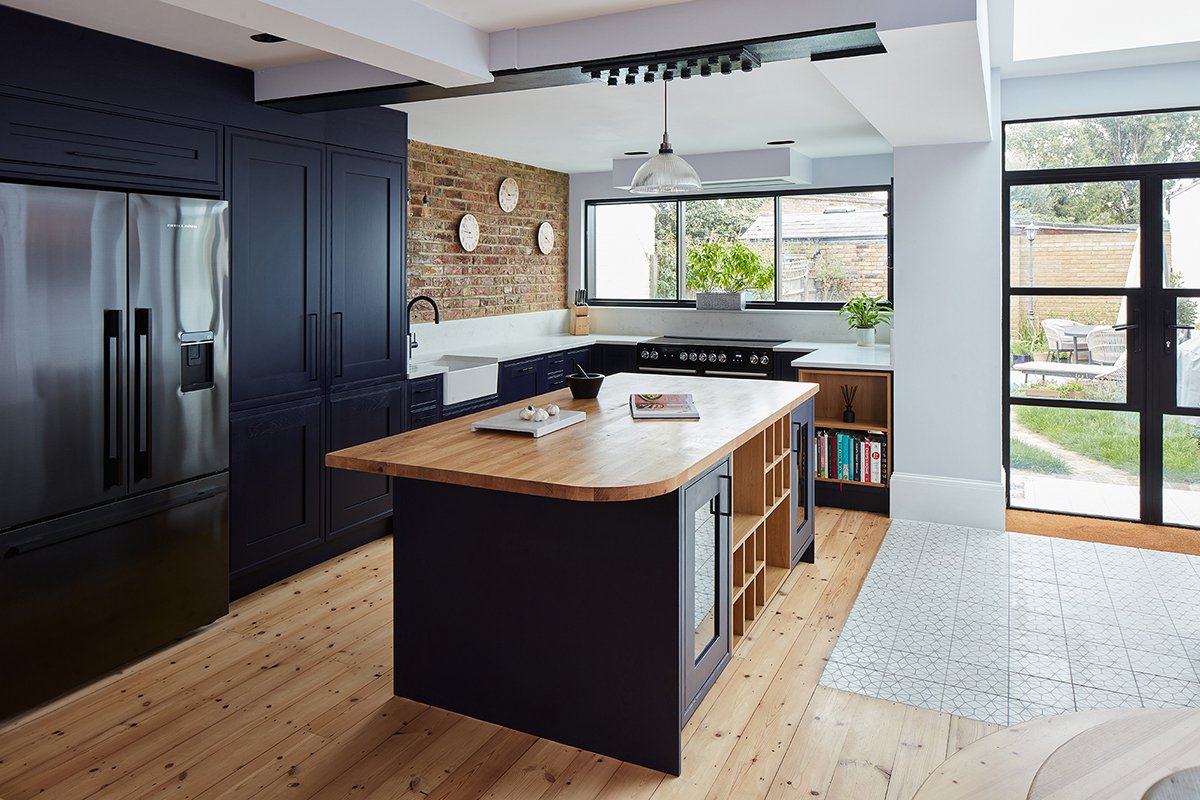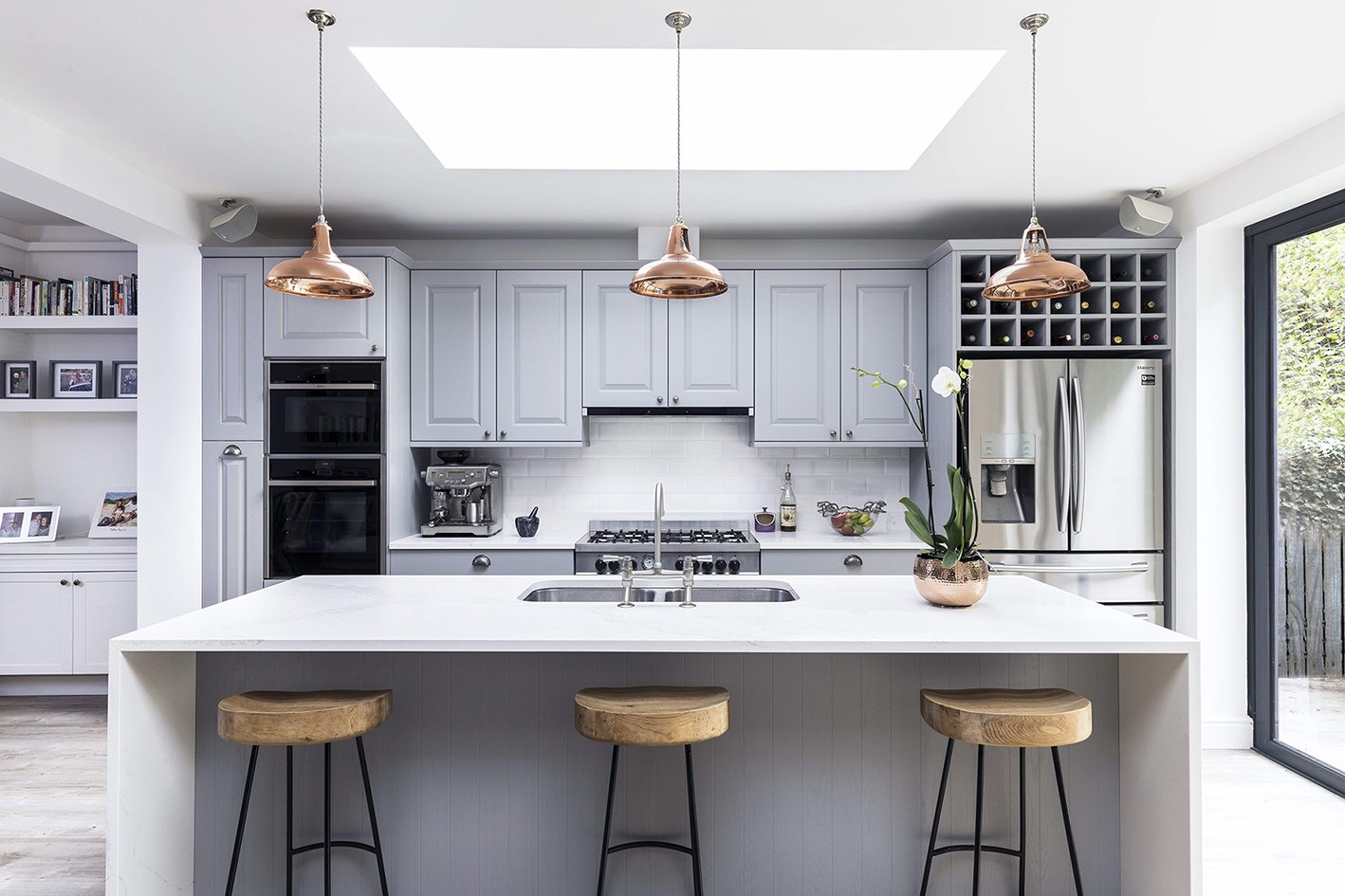Where to invest when designing your new kitchen
A new kitchen is a worthwhile investment. It’s the space we generally use the most in our homes, and in more recent years, a space that plays multiple roles in family life.
Yes, it can be easy for costs to mount up when you start planning your dream kitchen — but no matter the budget you’re working to, it’s important to invest your money wisely and in the right places. That’s why prioritising your budget at the early planning stages is imperative.
The key to updating your kitchen while being mindful of budget, is to invest in parts that will last longer. Over a longer period, it represents better value for money, as you won’t be changing things as often — with the added bonus of reducing waste and helping the environment.
Essentially, investing in the core structure of your kitchen and the parts of it you’ll use the most works best. These are the parts to keep classic: then you can supplement with the smaller or more easily updated parts such as hardware and paint colours.
Here’s how to smartly invest in your kitchen…
Design and functionality
Kitchen design is rarely given the time and consideration it deserves. Thinking about how you will maximise your space — both physically, and in terms of considering how the space will meet your household’s unique needs — should be a critical step in your kitchen design process.
Importantly, kitchen design is not just about aesthetics or how many cabinets you can fit into your space. It’s about considering the architecture of your home and how to create a kitchen that works well for daily living. Taking the way you use your kitchen into consideration, it’s important to acknowledge the fundamentals such as your storage requirements, and the zones you want to create within your kitchen e.g. eating, unpacking, and washing up.
Creating a kitchen layout that truly suits your household’s needs is a good way to reduce costs down the line too. The more effort you put into the functional layout of your kitchen, the less you’ll need to revisit it later on. Visible elements - from fixtures and fittings to finishes - are easier to refresh, but the integral layout will be the part that requires the most thought and will be the most expensive to redo.
Cabinetry
The materials you choose to build your kitchen with will make a huge difference to your costs but can be approached cleverly. Modern kitchens can often use more cost-efficient materials like MDF without an impact on style. More traditional kitchens or those at the higher end of the price spectrum will often use solid ash or oak wood as the primary door material.
At PAD, all of our cabinet carcasses, whether modern or traditional, are made from EGGER MFC and can be made in more than 30 different finishes.
The most important thing to remember with cabinetry is that it’s used regularly and often expected to hold heavy items. Cupboards that store heavy items, in particular, can start to bow if built with cheap materials and will likely need replacing far sooner than their slightly more expensive counterparts. Investing in strong components and rigid construction is a good idea for a structurally superior end product.
At PAD, we use top-of-the-range Blum for all of our cabinetry hardware such as the hinge and drawer systems. This gives your kitchen longevity even when used every day.
You can find out more about our cabinet specifications here.
Sustainable appliances
There’s a double benefit to choosing kitchen appliances with sustainability in mind: it’s as good for your budget as it is for the planet. While the initial cost may be higher for some of these appliances, the long-term impact on the planet and your household bills are well worth the investment.
Outside of making your kitchen look and feel more expensive, choosing higher quality and energy-efficient appliances, such as a Quooker tap, can monumentally reduce your energy and water usage — ultimately lowering the overall carbon footprint and cost of your home.
Lighting
The best kitchen lighting is unnoticeable, bad kitchen lighting will drive you mad on a daily basis. Lighting key areas such as your food prep spot is fundamental to a kitchen that is a pleasure to use. Beyond prep and cleaning, there are also things like pendant lighting for eating areas or perhaps a feature light over the dining table. It’s important to consider how you use the space and therefore how it needs to be lit and when. For example, high-quality dimmer switches can help create an ambience for dining in an open-plan space. We would always recommend allowing a sensible budget for your kitchen lighting.
Here’s how to use pendant lighting in your kitchen.
Worktops, fixtures and finishes
With the structure in place, you can then turn to the aspects you’ll see most often, such as worktops, handles, paint, and other aesthetic touches. Whilst we would always recommend spending wisely on handles, these are much easier to replace regularly than the foundational cabinetry itself. You can also get some very good quality handles without spending a fortune!
Worktops are very important; you can read our piece on choosing the right worktop if you’re unsure which material will suit your needs best, but they can also be changed later on. Budget wise, it’s still better to invest in something that will last but if your immediate priorities are elsewhere, then changing your worktop later on won’t affect the rest of your kitchen.
Getting the fundamentals of your kitchen right means you won’t need to spend a fortune each time you refresh the aesthetic touches over the years. When you start thinking about designing a new kitchen, start with planning your budget around the fundamentals that are most important to you. You’ll need to spend more on certain elements of your kitchen depending on your lifestyle. For example, if you use spices a lot you’ll probably want a stain-proof worktop such as Dekton which costs more than some of the alternatives. You may therefore decide to opt for slightly more affordable appliances and prioritise a Dekton worktop when it comes to allocating budget.
At PAD, we also check in yearly with you - for 10 years - to see how you’re getting on and make any minor adjustments that may be needed.
If you’re considering a new kitchen and want to make sure you invest in a timeless design that is made to last, please do reach out to us — we’d be happy to help.





















